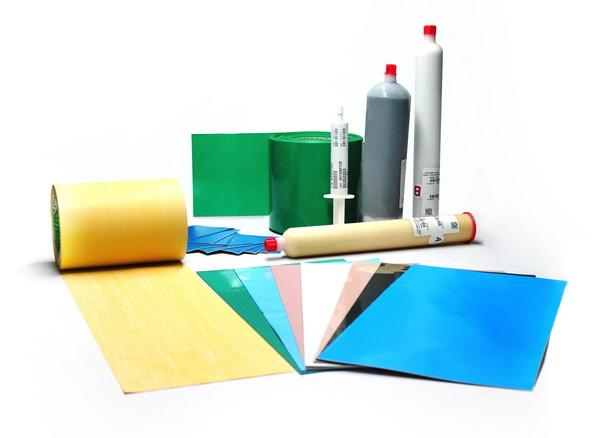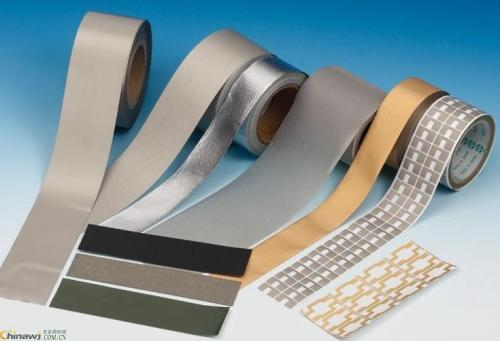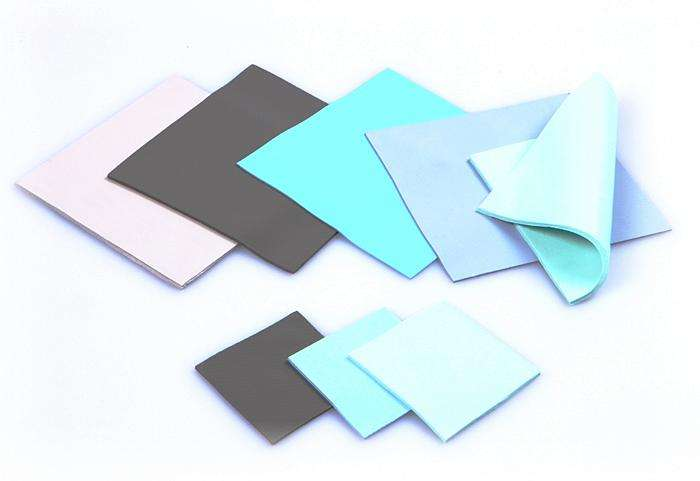Economic Observer reporter Chen Zhouxi Not long ago, Xu Dongmin, director of the Energy and Environmental Resources Division of the Hangzhou Municipal Development and Reform Commission, ended a four-day investigation of Qiandao Lake, Lin'an, Jiande and Tonglu. He said that similar research has been carried out many times before, covering various counties and cities in Hangzhou, and some key projects, mainly preparing for the preparation of "Hangzhou 12th Five-Year Low Carbon City Development Plan" . “It is expected to be completed in June and is expected to become the first low carbon city plan in the country.†   In July 2008, Hangzhou took the lead in the country to propose the goal of building a “low carbon cityâ€. According to the requirements of the Hangzhou Municipal Government, by 2020, the carbon dioxide emissions of Hangzhou's 10,000 yuan GDP will be reduced by 50% compared with 2005. This indicator is 5-10 percentage points higher than the national total.    Xu Dongmin said that Hangzhou is in a new stage of per capita GDP from 10,000 US dollars to 20,000 US dollars, and has already established the economic foundation for building a "low carbon city." At the same time, building a low-carbon city is conducive to accelerating the transformation of economic development mode and promoting industrial transformation and upgrading. "From the survey situation, some counties and cities are more in-depth understanding, and some counties and cities are still superficial. This requires the government to vigorously promote planning, policies, and tax incentives."    According to authoritative sources, Hangzhou City is preparing to set up a “Leading Group for Building Low-carbon Citiesâ€. Hangzhou Municipal Party Committee Secretary Huang Kunming is the leader of the group, and Mayor Cai Qi is the first deputy leader. In addition, Hangzhou has set up a low-carbon fund with a capital of up to 5 billion yuan; the municipal finance will also set up a “low-carbon city special fund†to support the development of low-carbon industries.    "low carbon" turtle    Since the end of last year, the turtle farm of Hangzhou Jiehong Breeding Co., Ltd. has attracted a batch of Hangzhou government officials to visit and inspect. The focus of everyone's visit is that the farm is equipped with six ground source heat pump air conditioners. The wonderful geothermal energy is heated in the greenhouse, which not only reduces greenhouse gas emissions and energy waste, but also reduces costs.    Farm owner Li Yiqin said that he could successfully renovate the ground source heat pump heating and air conditioning, thanks to his more than 20 years of air conditioning work experience. His farm is located in the Xiaoshan reclamation area along the Qiantang River. Even in the cold winter, the groundwater pumped up is 16-18 degrees Celsius. After the water flows through the copper pipe, 7 degrees Celsius is used by the air conditioner for heating. After repeated experiments and improvements, he began to use ground source heat pump air conditioners to heat the greenhouse in September last year. A 600 square meter breeding greenhouse, using only two 5 air conditioners, will allow the turtle to spend a warm winter.    In 2006, Li Yiqin invested nearly one million yuan to establish a turtle farm in the Xiaoshan reclamation area. He said that the best temperature for turtle growth is 33-35 degrees Celsius. To ensure this temperature, he can only use coal to heat. Two coal stoves are installed at each end of a greenhouse. The three greenhouses must burn at least 720 coal cakes per day, and the cost price is about 500 yuan. He said that coal burning is not only costly, but also emits a large amount of carbon dioxide. More importantly, in a 60-meter-long greenhouse, due to poor air flow, coal-fired heating tends to be hot and cold in the middle, and the turtle is prone to illness and death. .    In 2008, Li Yiqin began to switch to straw heating, although the cost of materials has dropped, but labor costs have risen sharply. In particular, the problem of uneven heating is still difficult to change.    In the face of the painful economic losses, in March 2009, Li Yiqin thought about whether he could use the ground source heat pump principle to improve air conditioning. So, he took a 13-meter-deep well and bought air-conditioning, PVC pipes, and copper pipes for experiments. He invested more than 100,000 yuan. In just 6 months, he successfully transformed the first ground source heat pump air conditioner. Nowadays, in his turtle breeding greenhouse, not only the temperature is even and smooth, but the turtle grows very well.    Li Yiqin said that ground source heat pump air conditioning heating, the cost is much lower than burning coal. He said that he has installed ground source heat pump air conditioners for 16 or 7 farmers. The material cost price is only 6,000 yuan, and the cost can be recovered within a few years. "There are still many farmers asking me to install." At the beginning, there were even a few pig farm owners who suggested that they could learn from his technology to achieve energy conservation and consumption reduction in farming.    The director of Hangzhou Science and Technology Bureau and Dr. Jian Jian, a doctor of engineering, said that last month he conducted a field investigation of Li Yiqin's turtle farm. “The ground source heat pump air conditioner is practical and influential, and should be promoted in related industries in the future.†It is understood that In addition to Li Yiqin's ground source heat pump air conditioners, many hotels and individual buildings in Hangzhou have been using the water circulation source heat pump principle, which can save 30%-40% energy, and a set of equipment can recover the cost within 10 years.    Ground source heat pump air conditioning is just the epitome of Hangzhou to build a low carbon city. Xu Dongmin said that in order to build a low-carbon city, Hangzhou has launched a series of actions: implementing an “environmental city-based†strategy, building eco-cities, healthy cities and national forest cities, creating a national environmental protection model city, and creating “the cleanest city in the countryâ€; “3+1†modern industrial system, implement comprehensive insurance projects such as West Lake, Xixi Wetland, Canal, and urban rivers, develop new energy industry, promote green buildings, and launch “free bicycles†to build subways, buses, taxis, and free The “five in one†bus system for bicycles and water buses implements a series of measures such as garbage cleaning and direct transportation.    For example, in the “Ten City Wanhao†semiconductor lighting (LED) application project in Hangzhou, the canal lighting is one of the key contents of the comprehensive protection project of the canal. According to the design of French designer Rogge, the Hangzhou Canal lights all adopt LED, with blue-green light as the keynote, highlighting the intention of “waterâ€, and strive to become a world-class lighting tourism product. According to scientific and technological sources, LEDs save about 50% more energy than energy-saving lamps, and their service life is more than 8 times that of general lighting.    Government guidance    “To build a low-carbon city, government guidance is crucial.†Xu Dongmin, director of the Energy and Environmental Resources Division of the Development and Reform Commission of Hangzhou, said that at the end of last year, Hangzhou had submitted a proposal to the relevant state departments to apply for “National Low-carbon City Demonstration Pilot Cityâ€. In the application city, Hangzhou has a comparative advantage and the program is relatively mature."    In July 2008, Wang Guoping, former member of the Zhejiang Provincial Party Committee and secretary of the Hangzhou Municipal Party Committee, first proposed the goal of building a “low carbon city†in Hangzhou. Then, the Hangzhou Municipal Party Committee and the Municipal Government proposed to build a “low-carbon industry†and a “low-carbon city†in the country, and regard it as a major highlight of Hangzhou's ten new cities along the Yangtze River. In November last year, Wang Guoping said at the city's low-carbon conference that Hangzhou has achieved a per capita GDP of 10,000 US dollars. Next, what model should we use to achieve a per capita GDP of 20,000 US dollars and 40,000 US dollars? The challenges that climate warming poses for Hangzhou allow us to re-examine the way economic development takes place.    According to the "2008 Hangzhou Energy and Utilization Status (White Paper)" published by the Hangzhou Economic Commission and the Municipal Statistics Bureau, the total energy consumption of Hangzhou in 2008 was 31.825 million tons of standard coal. According to this data, some experts have estimated that Hangzhou will emit more than 60 million tons of carbon dioxide into the atmosphere every year, and per capita emits more than 7 tons of carbon dioxide per year.    On December 26th, Hangzhou held the city's low carbon city mobilization conference and issued the "Resolution on Building a Low Carbon City", demanding that by 2020, the city's GDP per 10,000 yuan of carbon dioxide emissions will be 50% lower than in 2005. Take the lead in building a low-carbon economy with low-carbon economy, low-carbon transportation, low-carbon life, low-carbon environment, and low-carbon society.    The goal of Hangzhou's low-carbon industrial structure is that the added value of the service industry in the city accounts for more than 60% of the GDP, and the added value of the cultural and creative industries accounts for more than 18% of the GDP. The added value of high-tech industries accounts for industrial growth. The proportion of value reached more than 35%, the circular economy formed a large scale, the proportion of renewable energy increased significantly, creating a batch of carbon dioxide “zero emission†enterprises, low-carbon technology and low-carbon products were promoted.    In addition, starting from 2012, all new commercial and real estate market sales, rental or construction of commercial housing must first receive an energy-saving grade certificate. According to informed sources, demonstration projects on photovoltaic power generation building applications in major projects such as the Metro, East Station Hub, Olympic Sports Expo Center, and Hangzhou Normal University New Energy College.    Implement a bus priority strategy to reduce the frequency of private car travel. Realize “zero distance transfer†for subways, buses, taxis, free bicycles, water buses and other transportation. The urban bus travel sharing rate has reached more than 50%, the 10,000-person bus ownership rate has reached 30 standard, the proportion of energy-saving and new-energy public steam (electric) vehicles has reached more than 25%, and the free bicycle service system is perfect, covering the eight urban areas. With 175,000 cars, green travel has become a reality.    Xu Dongmin said that unlike some cities that only mention the "low carbon" slogan, Hangzhou's goal and measures to build a "low carbon city" are very specific and can be achieved.    Lou Jianren, director of the Hangzhou Municipal Science and Technology Bureau, said that some cities in China have already recognized the concept of low-carbon development and have put it into action. But how to set the goals of the system, how to adjust the strategy, how to innovate the policies and systems, how to seize the opportunity to adjust the economic structure, the concept of low-carbon cities and the past in the aspects of circular economy, sustainable development, eco-city and garden city. What is the relationship between the work and how to integrate it, we have to think and solve it.    Civil capital assembly    Xu Dongmin said that government guidance and enterprise leadership are the main modes of operation for building a “low carbon city†in Hangzhou.    In fact, in the 2010 fiscal revenue and expenditure budget of Hangzhou, the “seven major economies†such as the low-carbon economy have been included in the focus of this year's financial support, and the private economy is still the top priority.    The 2010 fiscal revenue and expenditure budget (draft) formulated by the Hangzhou Municipal Finance Bureau shows that this year, Hangzhou has allocated 325 million yuan of budgetary funds and 508 million yuan of government funds for environmental protection, ecological compensation and urban greening, which is more than last year. 62 million yuan. As the top priority of support, Hangzhou City's special fund of 1.052 billion yuan this year supports the development of private enterprises, including special subsidies for industries such as medicine, new energy vehicles and Internet of Things. In addition, Hangzhou will also focus on supporting the service economy, the cultural and economic creation, the building economy, the open economy, and the suburban economy.    It is one of the main measures of the Hangzhou Municipal Government to establish an “industry fund†to guide and support the transformation and upgrading of enterprises. Xu Dongmin said that after the completion of the “Twelfth Five-Year Plan†low-carbon city development plan in Hangzhou, a “low-carbon city (or economy) special fund†will be established, and the fund scale will definitely exceed 60 million yuan of “special funds for solar photovoltaic industry developmentâ€. “As long as there are good projects, these industrial funds will support them.†   At the same time, Hangzhou is striving to become a “national low-carbon city demonstration pilot city†to increase support for low-carbon enterprises, such as corporate business tax reductions.    In addition, the Hangzhou Municipal Government initiated the establishment of the “Hangzhou Venture Capital Service Centerâ€, aiming to “build a venture investment service platform and promote efficient docking of technology capitalâ€. The center gathers venture capital institutions, guarantee institutions, banks, investment and financing intermediaries to be integrated. In accordance with the principle of “government guidance, enterprise main body, market operationâ€, the center aims to promote the industry by “finding capital for projects and finding projects for capitalâ€. Capital, financial capital, technology capital and human capital are effectively docked.    Xu Dongmin said that Hangzhou is a private economic market. The government mainly provides services such as policy guidance and platform construction. The key to building a "low-carbon city" is to incite private capital.    According to reports, a “low-carbon industry fund†with a capital of 5 billion yuan led by the Hangzhou Municipal Government is already in preparation, among which Zhejiang Zheshang Venture Capital Co., Ltd. (“Zheshang Venture Capitalâ€) is its partner institution. one. Hua Yuyu, chief executive of Zheshang Venture Capital, said that the low-carbon industry fund has a large amount of funds, mainly based on large-scale enterprise capital.    In fact, low-carbon economic business opportunities have long been the focus of private capital.    At the end of last month, Hua Yuyu brought the “Zhejiang Nuohai Low Carbon Fund†to Wenzhou for recommendation. This is the first private equity fund of Zheshang Venture Capital to invest in low carbon economy industry with a total scale of 200 million yuan. “Zhejiang private capital is abundant and active, and is very interested in low-carbon projects.†Hua Yuyu, chief executive of Zheshang Venture Capital, said that the amount of the capital contribution agreement has now exceeded 170 million yuan, and most of the single investment is in the millions. Above, only a few investments have just reached 4 million yuan. It is understood that Zheshang Venture Capital currently has a management fund of 1.6 billion yuan, and the “Zheshang Noah Low Carbon Fund†is the sixth fund.
Thermal management is very important for electric products design. The common thermal
management products are thermal
conductive pad, thermal adhesive
tape, thermal gap material ,Graphite
sheet, Thermal Conductive Glue.
Our thermal pad could reach as high as 6 W/m.k , It is much higher than
other thermal pad suppliers.
Thermal Management Products Thermal Management Products,Thermal Conductive Pad,Thermal Conductive Tape,Graphite Sheet JINAN EMI SHIELDING TECHNOLOGY CO., LTD. , http://www.emirfi.com


